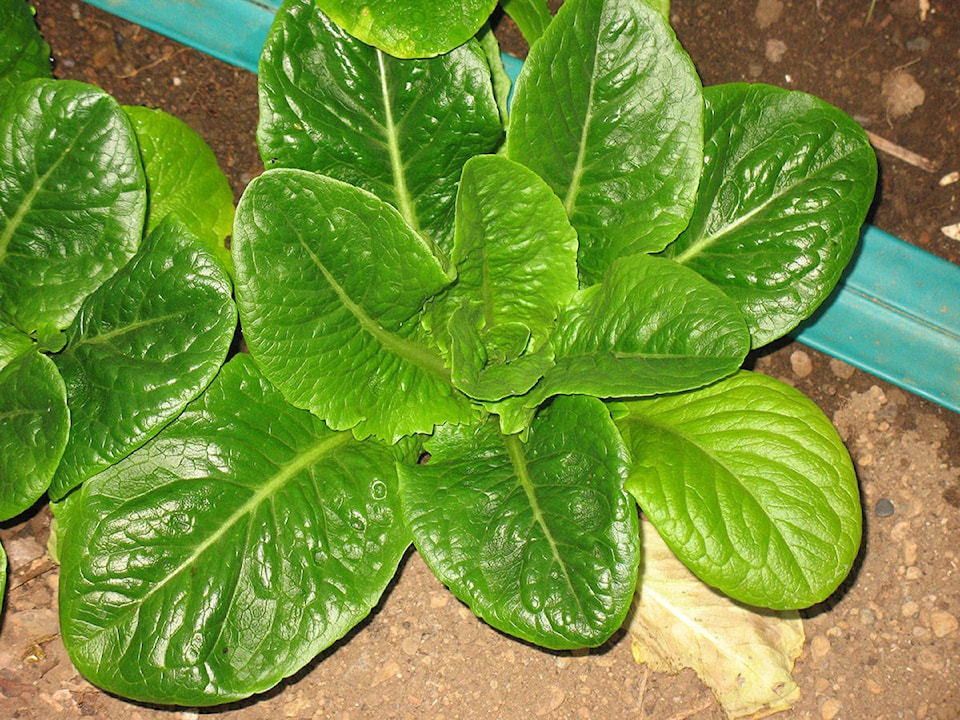By Mary Lowther
Studies have demonstrated that the most nutritious vegetables in the garden are dark leafy greens, while other studies have determined vinegar enhances the uptake of minerals like calcium from these vegetables. This happy coincidence means we can build stronger bones to avoid osteoporosis (among other things) simply by adding salads to the menu.
This depends, of course, on those minerals being present in the soil itself. The heavy rainfall in our local climate, however, washes the minerals out and unless we add them to our soils, lettuce grown here cannot contain them. Winter erosion can be reduced with cover crops, mulch or plastic sheeting that help retain nutrients in the soil, but when we harvest and eat the produce, minerals consumed are also removed and transformed by the miracle of digestion into flesh and bone that wander off and leave the soil depleted.
Your good health depends on the health of your food. Since plants require trace minerals to be nutritious enough to sustain good health I add them to my fertilizer mix. After all, I deserve the best! I want to live long enough to tell my readers I told you so.
Composted vegetation and manure can boost soil health as long as the carbon matter is balanced with nitrogen. Be careful not to add manure from animals that haven’t been fed a nutritious diet for their manure will reflect this lack and your garden will become increasingly unbalanced. Ask the manure supplier what the animals are fed: do they supplement the feed with minerals and are their animals capable of reproducing? Animals cannot reproduce when their diet is not nutritious.
Fertile soil holds water and nutrients well, so lettuce sown now into fully mineralized soil probably won’t need watering. We achieve this fertility by digging under the cover crop and adding about a quarter inch of compost and four litres of organic fertilizer containing trace minerals, per hundred square feet and hoeing this in.
We’re still eating lettuce from the greenhouse, but I prefer the stronger, livelier plants grown outside. For the first time in years I sowed some lettuce and spinach seeds outside last week. In my shady slug-ridden back yard I started my lettuce seedlings in flats inside until they were large enough to withstand slug predation, but this new plot is in full sun so I’m keeping my fingers crossed that slugs won’t like it.
I divide the bed into thirds and sow one third every three weeks so by the time the third bed is sprouting, the first bed is empty and able to be re-sown. This ensures a steady supply of lettuce. I gradually thin them out so that they never encroach on each other and harvest the last ones when they are three quarters grown. I also just tear off outer leaves to prolong the harvest, which is especially effective in the greenhouse and allows me fresh greens well into the winter.
Lettuce, like spinach and radishes, requires abundant water on a regular basis as well as cool weather, although some varieties have been bred to not bolt as quickly in summer’s heat. A smart person would sow these varieties in the summer and return to the cold-resistant ones in the fall. Given the unpredictable nature of seed companies these days, we cannot depend on them to continue to supply our needs, so if we grow a variety we like we should save our own seeds. Mark the best one or two heads and allow them to go to seed. Each planting of my lettuce bed contains the same variety so they won’t cross-pollinate. I plan to move lettuce destined for seed to a dry bed reserved for seed saving.
Our springs have been dependably wet so I generally haven’t had to water until June, at which time I lay down soaker hoses along each row and hook them up to a timer set to water for half an hour every four days. If I sow the seeds in summer, I’ll hand water each day until they emerge and go on the soaker hose schedule.
Please contact mary_lowther@yahoo.ca with questions and suggestions since I need all the help I can get.
